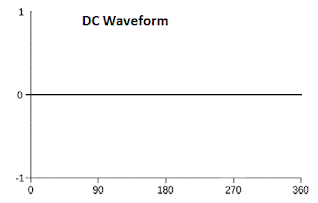AC Supply | AC DC Supply | AC Power Supply | AC Full Form in Electrical
If you are in the electrical industry or have an interest in it, you may have come across the term AC. AC Full Form in Electrical is "Alternating Current" which is one of the two main types of electrical current. In this article, we will explore AC & DC in detail, AC Full Form in Electrical, and how it is used in electrical applications.
What is AC Supply? | AC Power Supply
AC is a type of electrical current that reverses its direction of flow periodically. The change in direction of the current flow occurs at regular intervals, usually 50 or 60 times per second. This process is known as "oscillation" or "cycle," and it creates a waveform that is sinusoidal in nature.
The sinusoidal waveform of AC is characterized by its amplitude, frequency, and phase. Amplitude refers to the maximum value of the waveform, frequency refers to the number of cycles per second, and phase refers to the timing of the waveform relative to a reference point.
AC is the most commonly used form of electrical power for residential, commercial, and industrial applications worldwide.
Full Form of AC
The full form of AC is "Alternating Current." The term "alternating" refers to the fact that the current changes direction periodically, as opposed to "direct current" (DC), which flows in one direction only.
Electricity flows in two ways: either
in an Alternating current (AC) OR Direct current (DC). Electricity or "current" is nothing but the
movement of electrons through a conductor, like a wire.
The difference between AC and DC lies in the direction in
which the electrons flow.
In DC, the electrons
flow steadily in a single direction, or "forward."
In AC, electrons keep
switching directions, sometimes going "forward" and then going
"backward."
AC is the best way to
transmit electricity over large distances.
Comparison between AC & DC | AC DC Supply
Parameter
|
AC
|
DC
|
Frequency
|
The frequency of alternating current is 50Hz or 60Hz depending
upon the country.
|
The frequency of direct current is zero.
|
Direction
|
It reverses its direction while flowing in a circuit.
|
It flows in one direction in the circuit.
|
Current
|
It is the current of magnitude varying with time
|
It is the current of constant magnitude.
|
Flow of Electrons
|
Electrons keep switching directions - forward and backward.
|
Electrons move steadily in one direction or 'forward'.
|
Obtained from
|
A.C Generator and mains.
|
Battery or Cell
|
Passive Parameters
|
Impedance.
|
Resistance only
|
Power Factor
|
Varies between 0 & 1.
|
it is always 1.
|
Types
|
Sinusoidal, Trapezoidal, Triangular, Square.
|
Pure and pulsating.
|
Applications of AC in Electrical Industry
AC has several advantages over DC, which is why it is widely used in electrical applications. One of the main advantages of AC is that it can be easily transformed to different voltage levels using a transformer. This is essential for the efficient distribution of electrical power over long distances.
AC is also safer to use than DC because it is less likely to cause electric shocks. This is because the voltage of AC reverses direction periodically, causing the muscles in the human body to contract and release rather than lock up, which is what happens with DC.
AC is used in a wide range of electrical applications, including power generation, transmission, and distribution, electric motors, lighting, heating, and air conditioning.
Conclusion
In conclusion, AC stands for "Alternating Current," which is a type of electrical current that reverses its direction periodically. AC is widely used in the electrical industry due to its efficiency, safety, and versatility. Understanding the full form of AC and its applications in electrical systems can help you better appreciate the role it plays in our daily lives.
FAQs
Q: What is full form of AC?
A: The full form of AC is "Alternating Current."
Q: Which of the Following terms does not represent Electrical Power in a Circuit?
A: Correct Option is 2 does not represent the Electrical power
Option 1 , 3, 4 represents the Electrical power
Q: What are the full forms of AC and DC?
A: AC stands for "Alternating Current," while DC stands for "Direct Current."
Q: What is the difference between DC and AC voltage?
A: DC voltage refers to a constant voltage that flows in one direction only, while AC voltage refers to a voltage that changes direction periodically. In other words, the polarity of DC voltage remains constant, while the polarity of AC voltage changes at a regular frequency.









Post a Comment